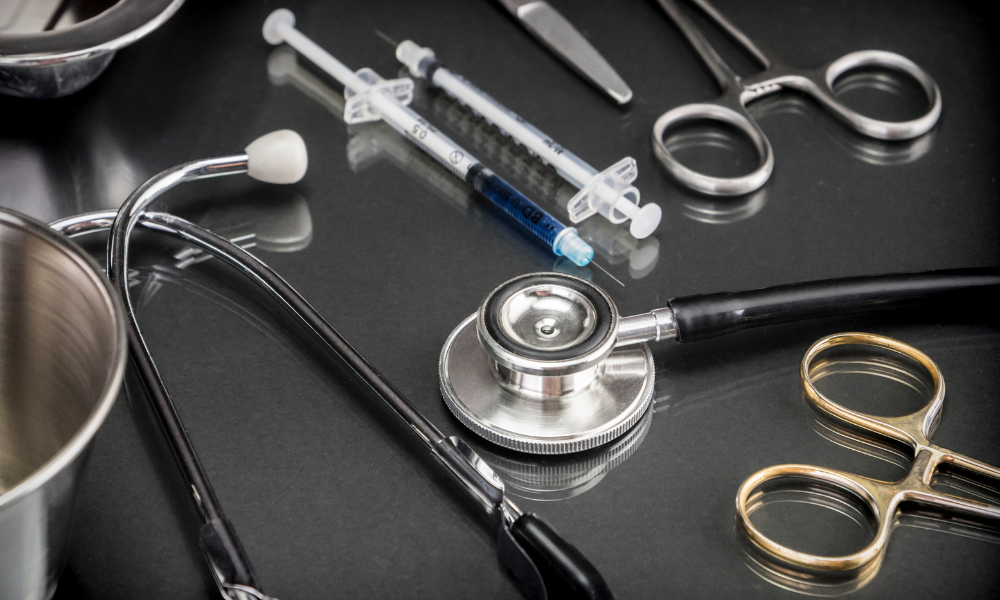Resources
Medical Device Testing Strategies for an Effective Regimen

All medical device manufacturers strive to ensure devices and biomedical technologies are safe, efficacious, and fit for intended use. The biggest roadblock to accomplishing this is medical device testing to determine the most appropriate regimen for the device and its use.
Although speed to market is key, a medical device CRO must devise and implement an effective production testing strategy early in the development life cycle. This is the only way to satisfy the demands of both the public and the regulatory bodies. For medical devices to perform, the testing process must have both compliant procedures and an excellent technical strategy from the start.
“In the early stages of product development, R&D teams can struggle with selecting the best application for initial development – finding that ‘killer app’ so to speak,” said Aaron Strickland, Vice President of Research and Development.
In addition to defining the best application for the technology, early testing can how a product should be tested for that application. This is because early-stage testing is exploratory in nature, while later-stage verification and validation testing can be more prescribed.
“While exploratory in nature, early testing must address several unique challenges including uncertain application targets. Many R&D teams struggle to select the best application for the initial development of their product. While it may take time, finding the best approach quickly is imperative to success,” Strickland continued.
“The more complex the technology, the greater the performance testing requirements. Multilayered technologies often require different types of testing to meet regulatory requirements.” Strickland added.
Another area that presents a challenge is limited resources or lack of expertise in regulatory strategy and quality management system (QMS) implementation. Given the rapid pace of change in the industry, R&D teams may not have the necessary expertise on staff at the right time. This is especially true for teams developing complex biomedical technologies.
Time constraints are also a factor. Business and market demands create the pressure to accelerate speed to market, so defining the best approach quickly is essential. Strickland recommends three strategies for an effective medical device testing regime.
3 Strategies for an Effective Medical Device Testing Regimen
Embrace Scientifically-Sound Test Methods
“By taking a scientific approach using a multi-disciplinary focus, manufacturers can be more efficient when we “splash around in the lab,” as we call it. This means the R&D team can delve into those initial exploratory tests with an open mind—all while making observations in order to refine the tests over time.” Strickland said.
This is easier said than done.
The one-size-fits-all view that each medical must be tested to the same specifications is ineffective and inefficient. It’s just not that simple. The medical device testing strategy may require a combination of standard and custom testing protocols to pass regulatory standards.
“An evidence-based approach will generate the most relevant tests. It will also help mitigate technology risk and home in on the absolute best application for the product in question.” Strickland noted.
Perform Statistically Robust Testing
Another strategy is to perform statistically robust testing. In statistics, the term robust or robustness refers to the strength of an experimental design according to the specific conditions of the statistical analysis a study hopes to achieve.
Strickland recommends this strategy as a way of ensuring success.
“Statistically robust testing includes defining the appropriate statistical power (i.e., how many times/days/conditions/replicates/etc. testing should occur) that will provide statistically defensible conclusions when transitioning a technology/product from one stage to another. Statistically robust testing throughout the development process will identify key risks or attributes of the technology/product, and while it may be more costly than testing with a limited sample size, it can be less costly than fixing problems that arise in later stages of the technology/product lifecycle as a result of not understanding a technology’s limitations.”
By answering these questions in advance —and defining the relevant statistical power—teams can reach sound, science-backed conclusions that will increase the chances of speedy regulatory approval.
Conduct Application and User-specific Testing
While standard tests are a starting point once an application is selected, many standards are subject to interpretation. This means that understanding your application—and the corresponding user needs—should be a considered when defining the testing approach.
Strickland explained, “Standard tests are a good starting place for any technology when an application is selected; however, many standards are subject to interpretation, so understanding the application and user needs (i.e., how will the end-user encounter the technology/product) are important to when planning experiments, even when using standard test methods.”
Example: If the final product requires antimicrobial properties, teams must think about the product’s intended use before defining the antimicrobial test. The approach for a topical skin solution, for instance, will differ from the approach for an implantable device.
“This is why iFyber considers itself an extension of our client’s scientific and/or development team. Rather than providing a catalog of test methods, we engage our clients with many questions to help define the most appropriate research/testing approach needed for their technology/product,” he added.
Find Supportive Medical Device Testing Services with iFyber
A realistic and effective test strategy requires several sets of test requirements based on component and manufacturing process specifications as well as critical functional specifications of the device. Determining the most effective approach through the product’s development cycle will ensure success.
Meet the high-touch scientific approach you’ve been waiting for.
iFyber is a full-service contract research organization (CRO) specializing in preclinical research services that support R&D teams in the development and approval of new products in industries including medical devices, wound care, diagnostics, and more.
Our experts integrate with each client’s R&D team—providing critical knowledge so that you can develop the most appropriate testing approach. The overarching goal is for our team to serve as an extension of yours. Contact the team at iFyber to learn more about what we can do for you.

